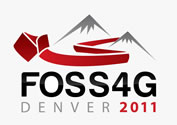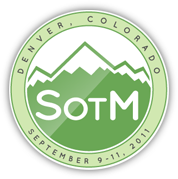OPeNDAP vs. WCS
Numerical models, such as hydrodynamic and climate models, produce output with a large number of variables and a large number of grid cells and time steps. Further use of the resulting data products has been challenging, especially for further use outside the institute of origin. Due to the vastness of the data, simply downloading copies of data is impossible. Web services are therefore used to access subsets of the data. The most mature candidates for working with gridded data are OPeNDAP and WCS. Here we compare these two protocols to serve gridded data through the web.
In the framework of the new Dutch National Model and Data Centre (NMDC) a distributed data storage has been realized by coupling OPeNDAP servers (data cloud). A WCS service layer is provided for the same data. This allows us to compare OPeNDAP and WCS. Using several use cases, we compare the data model, terminology, features and usability, both for developers and end-users.
The data models show the different origin of the two standards. The OPeNDAP data model, called the common data model (CDM), is based on the merge of the data models from the NetCDF software, the HDF5 software and the OPeNDAP protocol. It is based around the use of multidimensional arrays. The Coverage data model uses a more abstract terminology, based on geospatial data types.
The terminology that the CDM uses is more closely related to the terminology used in numerical modelling. A grid of air pressure depending on latitude longitudes is called a DiscreteGridPointCoverage in the WCS terminology, while it is represented by the variables latitude, longitude and air_pressure with the attribute coordinates=”lon lat” and grid_mapping in the CDM model with the CF convention.
This marks another important difference between the two standards. The Coverage specification covers data exchange aspects plus temporal/geospatial aspects. The OPeNDAP protocol only concerns the data exchange. Temporal/geospatial aspects are implemented in additional conventions, notably CF.
OPeNDAP is essentially index-based that returns only arrays or a file with arrays. In constrast, WCS offers additional service layers, such as subsetting based on bounding boxes. A WCS also provides functionality to reproject coverages to other geographical projections. Unfortunately WCS services are seldom available for for curvi-linear and unstructured grids.
For comparing the usability we compare the required effort to implement client and visualization software, based on examples from river and coastal modelling.
Researcher at TU Delft and Senior Advisor at Deltares. Specialized in the field of morphology, statistics and integrated environmental modelling.











